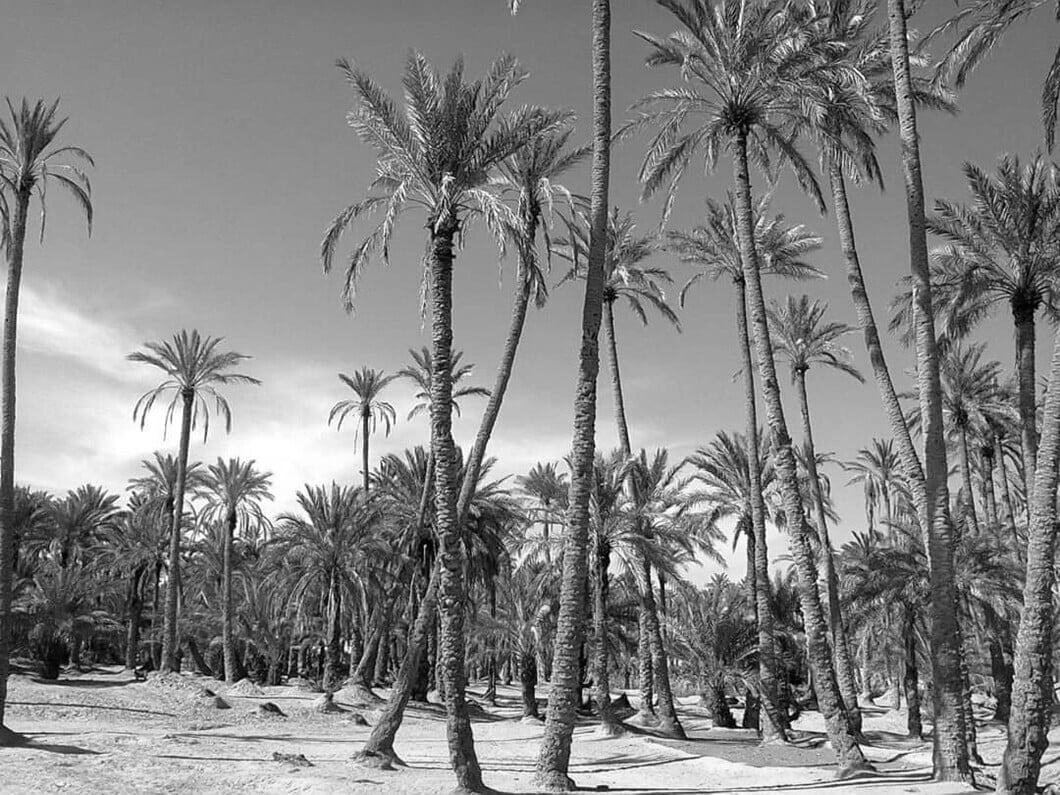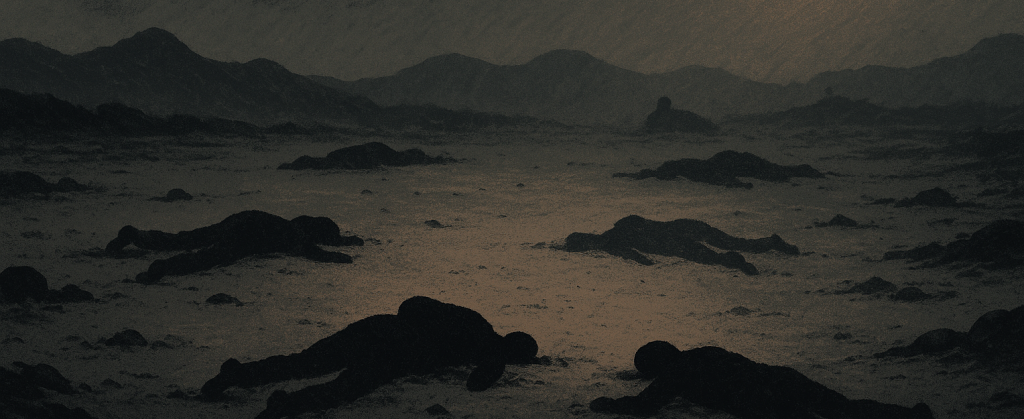A terrible Hamen
Gohar does not remember her father. She was no more than 4 years old when the Waba (the epidemic) came and killed most of her family. Her memories of her father and the Waba are the stories passed on to her by her mother and grandmother, the stories of horror, trauma and death.
In fact, the trauma inflicted on Gohar’s mother was so deep that many decades after the epidemic, when she was on her deathbed, her last word was “Eleven”. That is the number of immediate family members she had lost. Gohar has herself been haunted by every Hamen (date harvest season) ever since that epidemic of the 1960´s Hamen. She does not eat the sought-after Muzatti dates of Panjgur.
The Waba came at a time when the State had a few years ago, probably in 1955, for ‘the good of the Baloch people’ stripped Balochistan of its semi-autonomous status and incorporated it into the one unit of the then West Pakistan.
Balochistan, instead of a far-flung underdeveloped region, which it is right now, was a ‘proper part’ of West-Pakistan at that time. But it did not make any difference. And yet even then, the deathly silence on Balochistan was there. No reference to the epidemic in Panjgur that killed thousands has ever been mentioned in any Pakistani history books. And what is more, not many Baloch people outside of Panjgur are aware of such an epidemic.
The flood and the feces
It had begun with another disaster that had hit Panjgur a year before the Waba in 1959. It was a flood. They say it had rained like never before. The skies remained open for a week. The Rakshan River which cuts through the town spilled into the villages drowning people and destroying their mud houses. The strong currents carried away all that the people held dear. They say the only thing that is left behind were the scattered feces from the destroyed mud latrines. Many speculate that the destruction caused by the flood was the reason for the Cholera outbreak the next year.
First, there were only a few deaths but the following summer, the summer of horror for Gohar’s family, all hell broke loose.
While the disease kept brewing, no medical team was sent to Panjgur. In fact, a few months after the flood and a month before the intensification of the Waba, the military rulers of the time had hanged the companions of the legendary rebel leader Nawab Nouraz Khan in Hyderabad.
With their hanging, the “end of Baloch deprivation” was also pronounced.
Anyhow, for Gohar´s family, who were by all means unaware of the political happenings, the politics did not change their fate.
Colours of death
“My mother told me it was diarrhea. No, not like anything you people get nowadays. They told me the discharge never stopped. Not even if you stopped eating and drinking. It only stopped after you breathed your last. But before death, agonizing cramps would set in. The hands and legs would twist with writhing pain. The skin would lose colour. The eyes would sink in and the face would grow so thin as if you had not eaten anything in years. And when you would expect your skin to turn completely black, it would blissfully stop short at the blue colour.
“How peaceful was the death after turning blue?”
“Peaceful for most. Only a few would thrash their hands and legs,” Gohar says.
“How many died?”
“No one knows. No one counted. The gravediggers could not cope with the sheer number of bodies. Thousands perhaps, if not tens of thousands. My mother said Bonistan was full of unattended dead. From our family, 11 died, including my father and three siblings,” she says.
“And your other brothers and sisters?”
“No,” she says. “They died after a few years. Not because of the Waba but of measles.” Gohar had 8 other siblings. Those who survived the Cholera later died due to various other diseases. Only one brother survived if we count a drug addict among the survivors, that is.
“What about the help from the government?”
“Nothing. Our people treated the patients with Sheellanch (salty dried cottage cheese) and Onion.”
Fate and the date harvesters
That is how Gohar describes the devastating Cholera in Panjgur of 1960. She blames fate for the death of her family members. Her father, Peer Baksh, owned some date palms in the village Bonistan, Panjgur, where he went annually in the harvest season. Unaware of the Cholera situation in Panjgur, one day he went to Bonistan along with nearly all the other people from his small village of Mudi to harvest his Date palms.
By 10 o’clock the next morning, he was dead.
Within the next few hours, other members of the family, neighbors, workers and seasonal harvesters started to fall one by one.
Peer Baksh was from Mudi situated about 35 km west of Bonistan at a junction where Panjgur´s two rivers Rakshan and Gwargo meet. The villagers´ farms were irrigated by the Gwargo river.
No one knows how many people from Mudi survived the epidemic. They say the survivors were so few in numbers that they simply did not go back to their ancestral village. Some had lost husbands, others had lost their children and yet others their wives. No family was fully intact.
They settled in other villages. The mud huts of Mudi have since then been half-buried under the sand by Balochistan´s unforgiving Northern wind, the Goreech. Mudi now exists only in the memories of a few old people.
A happy town and the return of the nightmares
The Rakshan River in Panjgur which today shows the picture of just another barren ravine with occasional water flow during the rains was not always so dry. In those days, it was much more alive. Panjgur itself was not a city like it is today. It was a union of 12 major towns, each of which derived their water supply from the natural springs that sprouted in the Rakshan River. Therefore, back then it was proudly known as Dwazdah Shahr e Panjgur, the 12 towns of Panjgur. The spring water was channeled in overground canals known as Kaurjo and underground canals known as Kanat.
One such canal irrigated the date palms in Bonistan town, the epicenter of the epidemic. Apart from irrigation, canal water was also the main source for drinking, cleaning and other necessities. It is now believed that all the canals, except the Gramkhan Kanat, derived water from the Rakshan River were the source of the 1960´s Cholera epidemic. Only the Gramkhan Kanat was spared because its spring source was higher above the river and was not contaminated.
Meanwhile, Gohar married in the early 1970s. Like her mother, she bore 9 children. Fortunately, none of them died due to diseases before adulthood. Now, she is quite old and recently her thoughts have started falling into unease. She has started to experience nightmares once again. To her astonishment, the nightmares are exactly the same as she used to have as a child.
Gohar’s daughter, a doctor, thinks this started after her mother heard about the death of one Sayad Mohammed in Panjgur. They say he died from the Coronavirus. There are also other rumors doing the rounds about another old woman, Ganji, having died from it and a few young men and women having caught it. No one knows for sure. The government´s website right now shows only one infected case in Panjgur and no deaths.
“I see blue bodies in my nightmares. First, their lips turn blue. Then their faces and then they gradually die without turning black,” the old woman says.
Gohar´s daughter tells her, “you see blue bodies because you heard us talking about Corona patients´ lips turning blue before they die. But that is not true. No one turns blue due to the virus.”
Nonetheless, Gohar still insists that her nightmares predicate the ongoing epidemic. She believes this Corona thing is a reincarnation of the one that took her father away. Considering her childhood trauma, one might agree that she is unnecessarily paranoid. But her son, also a doctor, shares her paranoia. He says that historical medical data shows that epidemics are most dreadful for those who are already weak and under stress. The marginalized, the subjugated and the half-starved are the easiest to fall prey to such contagious diseases.
‘It’s still 1960’
Reports suggest Balochistan has one of the highest multi-dimensional poverty rates in the world and one of the weakest health care systems. The region, which is roughly as big as Germany, had only 7 functioning ventilators at the outbreak of the Corona pandemic. According to a research by the National Nutritional Cell of Pakistan, 49% of women in Balochistan suffer from malnutrition. It has one of the highest maternal mortality rates. Only seven percent of Balochistan´s population has access to tap water. The simple precautionary measure of washing one’s hands under a running tap water is a mirage Balochistan´s people have been chasing for decades, often being gunned down like Yasmeen* during protests in this quest.
Fifty-two percent of the children have stunted growth while 57% suffer from chronic malnutrition. Most men have already picked up many ailments and grown far older than their ages under the, some claim, carefully designed century-old colonial stratagem to subjugate the entire people. Only a small percentage of Balochistan’s population might be healthy. All districts in Balochistan except Quetta are worse than or on par with the worst-performing African nations.
This disproportionate prevalence of ailments and a health care system far worse in comparison to other parts of Pakistan makes its population particularly susceptible to the Coronavirus and the deaths that come with it.
Moreover, a major part of Balochistan´s economy is dependent on border trade with Iran and Afghanistan. For the majority of those who are suffering financially due to the Corona lockdown, the current closure of the borders with no State support in sight has already pulled the rug from under their feet. Now they might well die of hunger.
Nationalist parties of Balochistan blame the State for running Balochistan like a colony. They claim that the Corona-related deaths in Balochistan might not be truthfully reported as happens usually.
They blame the State for indulging in electoral manipulation, the kill and dump policy, assassinations, military operations and other atrocities to suppress the voices from Balochistan. They note that the state cannot even afford to let a humanitarian catastrophe or a pandemic bring Balochistan into the limelight. They cite the example of the Awaaran earthquake of 2013 in support of their argument. From their point of view, the State´s desire to stifle debate on Balochistan supersedes everything else.
As of now, one can only imagine that Balochistan has been hit by a double pandemic. One is, as pointed out by the nationalists, the rarely-reported military subjugation and the relentless diseases of poverty and the deaths caused by it. The other is the Coronavirus.
Gohar and her son see this situation and believe their paranoia is justifiable. She says nothing has changed in terms of helplessness. “I compare my nightmares of the Waba that killed my family to the reality of the health situation in Balochistan today and, believe me, there is not much of a difference,” the old woman says. “To me, it’s still 1960.”
*Yasmin was a child among many protestors who were killed by the security forces´ indiscriminate firing in 1987 in the coastal town of Jiwani. They were protesting for water.



